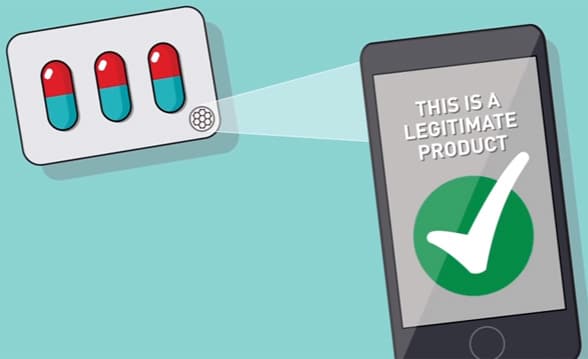
Researchers from Lancaster University have created an ID technology based on irregularities found in two-dimensional materials such as graphene. An atomic-scale quantum “fingerprint” can be attached to a range of items from money to medicine, allowing consumers to use their smartphone camera to check the authenticity of the item.
The technology has been designed to combat counterfeiting of goods, which currently accounts for nearly US$500bn in lost revenue around the world every year, according to the researchers and university spin-out company Quantum Base who are showcasing the patented technology at the Future without Fakes exhibit of the Royal Society Summer Science Exhibition 2017.
“The new invention was made possible through pioneering work on the thinnest, strongest and versatile material — graphene — which was awarded the Nobel Prize in 2010,” the researchers say. “Materials like graphene are one atom thick, so-called 2D materials. They can emit light that can be measured with a camera. When light is shone on the 2D material, tiny imperfections shine causing the material to emit light.
“This glow can be measured as signal, unique only to that small section of material. The signal can then be turned into a number sequence which acts as a digital fingerprint.
“Small flakes which are invisible to the human eye and one thousandth of a human hair can then be added to everyday items such as money, credit cards, passports and gig tickets. A smartphone app can then read a photo to tell the unique signal from the flakes and detect whether the product is genuine or fake through the right fingerprint or wrong fingerprint.”
And due to the materials used, the flakes could be edible and coated onto medicines.
A video gives an overview of the technology:
“This patented technology and the related application can be expected to be available to the public in the first half of 2018 and it has the potential to fit on any surface or any product, so all global markets may be addressed,” the team adds.
“It is wonderful to be on the front line, using scientific discovery in such a positive way to wage war on a global epidemic such as counterfeiting, which ultimately costs both lives and livelihoods alike,” says Lancaster University quantum physicist Professor Robert Young.
Next: Visit the NFCW Expo to find new suppliers and solutions